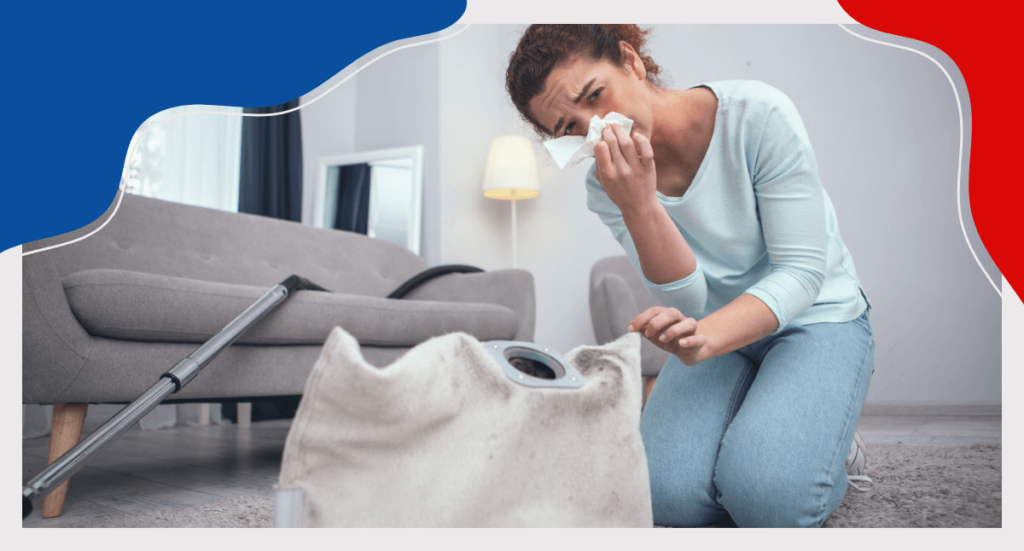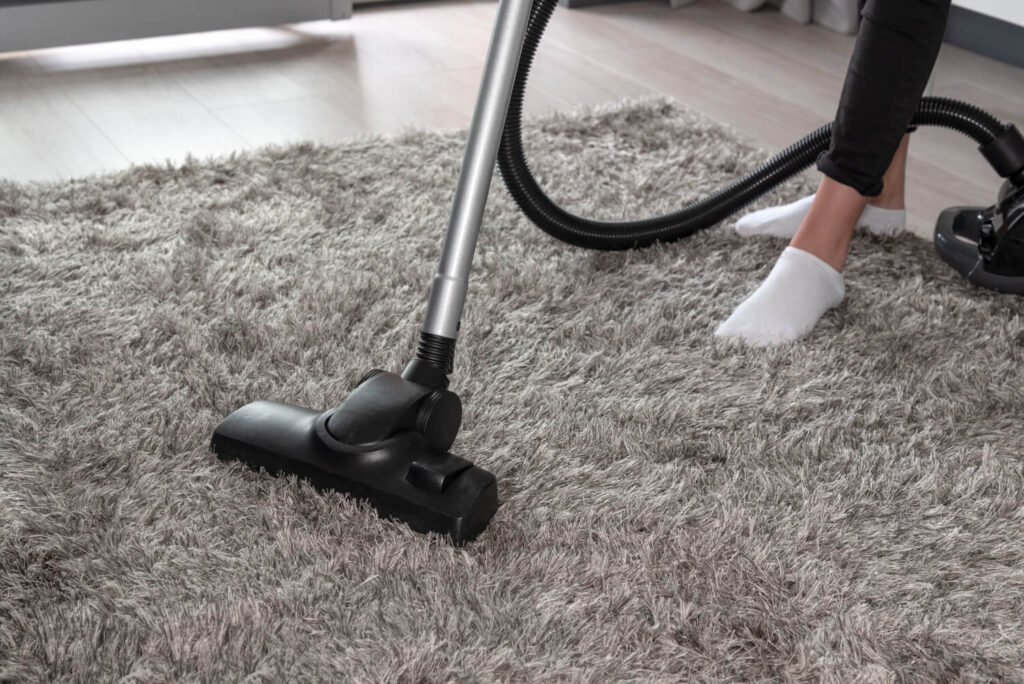Contents

Carpets can trigger your allergies in a number of ways:
- They can trap allergens like dust, pollen and pet dander.
- They can become a breeding ground for dust mites.
- They can absorb spillages which lead to mould.
Thankfully with the right maintenance, care and cleaning schedule, it is possible to own a carpet and enjoy its warmth and comfort without having to suffer from wheezing or sneezing. So, what strategies can you use to ensure your carpet is free of allergens?
Being prepared
Carpets act like a filter, trapping airborne allergens such as fur and dust, which in reality is much better than having those triggers just resting on the floor or floating through the air. Here are a few things to consider when you are buying a carpet and things you can do to maintain it:
- All carpets have their pros and cons, so do your research. Natural fibres like wool and cotton will trap less dust but are more likely to harbour mould than synthetic fibres.
- Check for a carpet that has been treated with a hypoallergenic solution. Often this can be found in synthetic carpets made from materials such as nylon.
- Invest in a vacuum equipped with a High-Efficiency Particulate Air Filter. (HEPA)
Before you even lay your carpet, it is important to choose the right fibre. Wool, for example, is naturally produced and when cared for properly, can last decades. However, it is also absorbent, which can increase the risk of mould developing and it can also shed more fibres than synthetic options that contribute to airborne allergens.
Nylon, in comparison, is treated for dust, allergen and moisture resistance, which is why it comes highly recommended for people who suffer from asthma. With a quicker drying time, it also reduces the risk of mould deposits developing.

Vacuuming
Vacuuming is the number one defence against allergens in your carpet. You should be vacuuming at least once a week with a short pile carpet but more regularly if you have a longer pile or live in a busy household with pets or children. Investing in a vacuum with a High-Efficiency Particulate Air Filter (HEPA) really will make a difference to the effectiveness of the job as they are designed to catch microscopic allergens, as opposed to blowing them into the air. Whilst this might seem an expensive investment, it is recommended by The National Asthma Council of Australia and suffice it to say, will prolong the life of your beautiful carpet.
Steam cleaning
Steam cleaning is the professional’s not-so-secret weapon. Steam is produced at up to 110c and destroys dust mites, bacteria and germs. Research has recently shown how steam-cleaned carpets when compared to hardwood floors, can reduce allergy triggers significantly. The study proved that the carpeted rooms not only had cleaner floors but the air quality of the room itself was much less polluted and free from allergens.
“Effectively cleaned carpets have the capacity to trap allergen and microbial particles, making these particles less available to become airborne and thus maintaining indoor air quality. This makes regularly cleaned carpet a choice for families impacted by asthma and allergies.”
Dr Bruce Mitchell
Professionals recommend that carpets should be steam cleaned at least twice a year, on top of their regular vacuuming schedule and more frequently if dogs or children are present. Ensure the cleaning company that you choose has experience in anti-allergy cleaning and antimicrobial treatments.
Create a pet-free zone
If you choose to have carpet in the room you love the most, such as your bedroom or living room, make those rooms pet-free zones. Your trusted companion can still have free reign over the rest of the house and the garden, but making sure they keep clear of your carpeted area will ensure that fur does not get clogged up. If it’s impossible to keep your beloved pet off the carpet, increase your vacuuming schedule to avoid all that fur becoming embedded in the pile.
What else can you do to remove allergens?
- Let the sunshine in
Opening a window whenever the sun is shining can help ventilate your room and remove airborne allergens such as dust and pet dander. Filling your room with fresh air can also reduce symptoms from conditions such as asthma.
- Hang out the curtains
Experts recommend that draperies and curtains are removed and properly aired out at least once a year.
- Rotate sheets regularly
Bedsheets are notorious for collecting dust and allergens so it is important to wash and change them regularly. Dry them outside if possible to guarantee an airing.
Using a cleaning company
Hiring a cleaning company is by far the best way to ensure that your carpets are clean and allergen-free. Your own regular vacuuming and cleaning schedule will take care of most of those irritants, but the only way to make sure that the job is efficiently done to a standard that won’t affect allergy sufferers is to leave it to the professionals. They not only have the equipment, but they also have the expertise and will be able to spot areas that may be just emerging as allergen hotspots before they get out of hand. With their expertise, a finished job means asthma sufferers will be able to breathe easily, safe in the knowledge that their condition will not be triggered by the likes of dust or fur.
In conclusion
Regular cleaning, including vacuuming with a HEPA filter and occasional steam cleaning is crucial to ensure carpets remain allergen-free. For those with severe allergies or conditions such as asthma, choosing short-pile carpets and using allergy-friendly carpet cleaners can also be helpful. Additionally, maintaining good indoor ventilation and controlling humidity levels can further enhance the allergy-reducing benefits of carpets. Boas Cleaning Services is a carpet cleaning professional in Perth, equipped with the latest steam cleaning technology to minimise the triggers for allergy sufferers.
